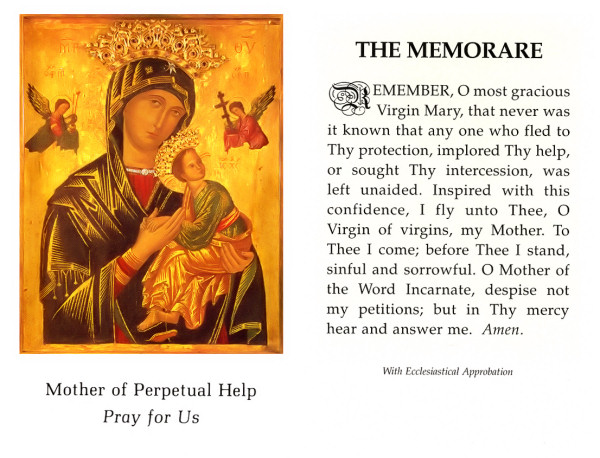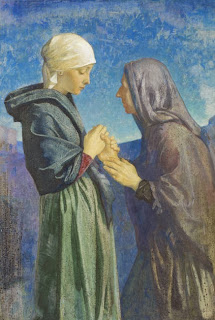'A Season of preparation for the birth of the Lord.' Sunday Reflections, 1st Sunday of Advent, Year C
Christ in the Storm on the Sea of Galilee, Rembrandt
We begin Year C, which highlights St Luke's Gospel
Readings (New American Bible: Philippines, USA)
Readings (Jerusalem Bible: Australia, England & Wales, India [optional], Ireland, New Zealand, Pakistan, Scotland, South Africa)
Gospel Luke 21:25-28, 34-36 (New Revised Standard Version, Anglicised Catholic Edition)
Jesus said to his disciples:
‘There will be signs in the sun, the moon, and the stars, and on the earth distress among nations confused by the roaring of the sea and the waves. People will faint from fear and foreboding of what is coming upon the world, for the powers of the heavens will be shaken. Then they will see “the Son of Man coming in a cloud” with power and great glory. Now when these things begin to take place, stand up and raise your heads, because your redemption is drawing near.
‘Be on guard so that your hearts are not weighed down with dissipation and drunkenness and the worries of this life, and that day does not catch you unexpectedly, like a trap. For it will come upon all who live on the face of the whole earth. Be alert at all times, praying that you may have the strength to escape all these things that will take place, and to stand before the Son of Man.’
Pope Benedict's Angelus Talk on the First Sunday of Advent, 29 November 2009. [I have highlighted some parts.]
Conditor Alme Siderum (Creator of the Stars of Night)
An ancient Advent hymn sung by the Christendom College Choir & Schola Gregoriana
Dear Brothers and Sisters,
This Sunday, by the grace of God, a new Liturgical Year opens, of course, with Advent, a Season of preparation for the birth of the Lord. The Second Vatican Council, in the Constitution on the Liturgy, affirms that the Church "in the course of the year... unfolds the whole mystery of Christ from the Incarnation and Nativity to the Ascension, to Pentecost and the expectation of the blessed hope of the Coming of the Lord". In this way, "recalling the mysteries of the redemption, she opens up to the faithful the riches of her Lord's powers and merits, so that these are in some way made present for all time; the faithful lay hold of them and are filled with saving grace" (Sacrosanctum Concilium, n. 102). The Council insists on the fact that the centre of the Liturgy is Christ, around whom the Blessed Virgin Mary, closest to him, and then the martyrs and the other saints who "sing God's perfect praise in Heaven and intercede for us" (ibid., n. 104) revolve like the planets around the sun.
This is the reality of the Liturgical Year seen, so to speak, "from God's perspective". And from the perspective, let us say, of humankind, of history and of society what importance can it have? The answer is suggested to us precisely by the journey through Advent on which we are setting out today. The contemporary world above all needs hope; the developing peoples need it, but so do those that are economically advanced. We are becoming increasingly aware that we are all on one boat and together must save each other. Seeing so much false security collapse, we realize that what we need most is a trustworthy hope. This is found in Christ alone. As the Letter to the Hebrews says, he "is the same yesterday and today and for ever (Heb 13: 8). The Lord Jesus came in the past, comes in the present and will come in the future. He embraces all the dimensions of time, because he died and rose; he is "the Living One".While he shares our human precariousness, he remains forever and offers us the stability of God himself. He is "flesh" like us and "rock" like God. Whoever yearns for freedom, justice, and peace may rise again and raise his head, for in Christ liberation is drawing near (cf. Lk 21: 28) as we read in today's Gospel. We can therefore say that Jesus Christ is not only relevant to Christians, or only to believers, but to all men and women, for Christ, who is the centre of faith, is also the foundation of hope. And every human being is constantly in need of hope.
Dear brothers and sisters, the Virgin Mary fully embodies a humanity that lives in hope based on faith in the living God. She is the Virgin of Advent: she is firmly established in the present, in the "today" of salvation. In her heart she gathers up all past promises, and encompasses the future. Let us learn from her in order to truly enter this Season of grace and to accept, with joy and responsibility, the coming of God in our personal and social lives.
+++
The Visitation, El Greco [Web Gallery of Art]
On 24 November I was travelling on a bus here in Ireland. I overheard a passenger say to another person, It's Christmas now. Not quite. There was still a full month to go before the Church's Christmas Season beginson the evening of 24 December either with the Vigil Mass in the early evening or, more commonly, with the Mass During the Night, formerly known as the Midnight Mass.
Advent is the liturgical season that has been largely sidelined, even in Catholic institutions such as schools which usually hold Christmas parties before Christmas has even begun. In my last few years in the Philippines I tried, with some success, to have these parties called Advent parties. Some groups I was associated with adopted the term while others compromised with the 'Pre-Christmas' party. I reminded them that a wedding banquet takes place after the wedding and a baptismal party takes place after the birth and baptism of the child.
In El Greco's painting of the Visitation above we see two women, Mary and St Elizabeth, vibrant with a dance of life, each carrying a child in her womb. Each was preparing for the birth of her child. And the young Mary, in the early stages of pregnancy, went specifically to be of help to her much older relative who was, according to tradition, about six months later in her pregnancy. Mary wanted to help Elizabeth prepare for the birth of St John the Baptist.
In the opening sentence of his Angelus talk Pope Benedict states clearly that Advent is a Season of preparation for the birth of the Lord.
In the weekday Masses in the earlier part of Advent we listen to a prophecy from the Old Testament and then a gospel reading that shows how that prophecy has been fulfilled with the coming of Jesus. This is meant to bring us hope for the future, that God who came into the world more than 2,000 years ago as a human being and is now risen from the dead will continue to be with us as individuals and as a community as we journey towards eternal life.
And Mary continues to bring Jesus her Son to us and to lead us to her Son, in accordance with the will of the Father. Pope Benedict's Angelus message ends with these beautiful words: In her heart she gathers up all past promises, and encompasses the future. Let us learn from her in order to truly enter this Season of grace and to accept, with joy and responsibility, the coming of God in our personal and social lives.
Ad te Domine, Alessandro Scarlatti
Antiphona at introitum Entrance Antiphon Cf Ps 24[25]:1-3
Ad te levavi animan meam, Deus meus,
To you, I lift up my soul, O my God.
in te confido, non erubescam.
In you, I have trusted, let me not be put to shame.
Neque irrideant me inimici mei,
Nor let my enemies exult over me;
etenim universi qui te exspectant non confundentur.
and let none who hope in you be put to shame.





Comments
Post a Comment